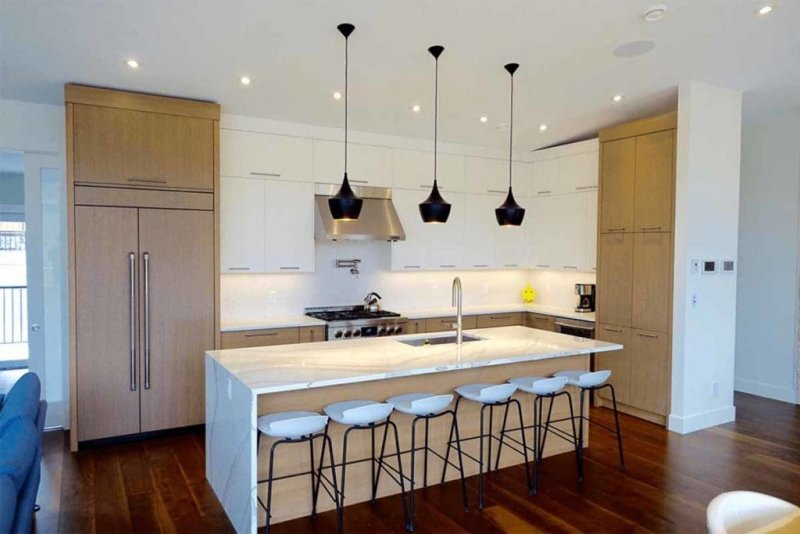
The world is constantly evolving, and with it, our technology. One area where this is particularly evident is in lighting. As we move towards more energy-efficient and cost-effective solutions, upgrading your lighting can have a significant impact on your monthly expenses. In this article, we will explore the benefits of upgrading your lighting, how to choose the right lighting options, and the long-term savings you can expect.
1. Energy Efficiency
One of the primary benefits of upgrading your lighting is increased energy efficiency. Traditional incandescent bulbs consume a significant amount of energy, converting only about 10% of it into light. The rest is wasted as heat. In contrast, energy-efficient lighting options like LEDs and CFLs can convert up to 80% of their energy into light, resulting in a substantial reduction in energy consumption.
2. Lower Electric Bills
With increased energy efficiency comes lower electricity bills. By replacing your incandescent bulbs with energy-efficient alternatives, you can expect to see a noticeable decrease in your monthly energy costs. For instance, an LED bulb can last up to 25 times longer than an incandescent bulb and use up to 75% less energy, leading to significant long-term savings.
3. Reduced Maintenance Costs
Energy-efficient lighting options, such as LEDs, have a longer lifespan than traditional bulbs. This means that you will need to replace them less frequently, leading to reduced maintenance costs. Additionally, LEDs do not contain hazardous materials like mercury, making them safer and easier to dispose of.
4. Improved Light Quality
Upgrading your lighting can also lead to improved light quality. LEDs, for example, provide a more natural and consistent light, reducing eye strain and improving visibility. This can lead to a more comfortable and productive environment, whether at home or in the workplace.
Choosing the Right Lighting Options
When upgrading your lighting, it is essential to choose the right options for your needs. Here are some factors to consider:
5. Lumens
Lumens are a measure of the amount of light emitted by a bulb. When choosing a lighting option, consider the lumens required for the space you are illuminating. A higher lumen count will result in a brighter light.
6. Color Temperature
Color temperature refers to the color of the light emitted by a bulb, measured in Kelvin (K). Lower color temperatures (around 2700K) produce a warm, yellow light, while higher color temperatures (around 5000K) produce a cool, blue light. Choose a color temperature that suits your preferences and the purpose of the space.
7. Energy Efficiency
As mentioned earlier, energy efficiency is a critical factor when upgrading your lighting. Look for lighting options with high energy efficiency ratings, such as ENERGY STAR certified products, which can help you save money on your energy bills.
8. Lifespan
Consider the lifespan of the lighting options you are considering. LEDs, for example, have a significantly longer lifespan than incandescent bulbs, reducing the need for frequent replacements and lowering maintenance costs.
Long-Term Savings
Upgrading your lighting can lead to significant long-term savings. Here are some ways in which you can maximize your savings:
9. Replace Incandescent Bulbs
Replace your incandescent bulbs with energy-efficient alternatives, such as LEDs or CFLs. This can lead to immediate savings on your energy bills and reduced maintenance costs due to their longer lifespan.
10. Install Dimmer Switches
Installing dimmer switches allows you to adjust the brightness of your lighting, reducing energy consumption and extending the lifespan of your bulbs. This can lead to additional savings over time.
11. Utilize Natural Light
Maximize the use of natural light in your home or office by opening blinds and curtains during the day. This can reduce the need for artificial lighting and further lower your energy costs.
12. Invest in Motion Sensors
Motion sensors can be used to automatically turn off lights when a room is unoccupied, reducing energy consumption and saving you money on your energy bills.
Conclusion
Upgrading your lighting is a simple yet effective way to save money on your monthly expenses. By choosing energy-efficient lighting options, you can enjoy lower electricity bills, reduced maintenance costs, and improved light quality. Additionally, by implementing strategies such as installing dimmer switches, utilizing natural light, and investing in motion sensors, you can further maximize your long-term savings. So, take the time to evaluate your current lighting setup and consider upgrading to a more efficient and cost-effective solution today.







0 Comments
Post Comment
You will need to Login or Register to comment on this post!